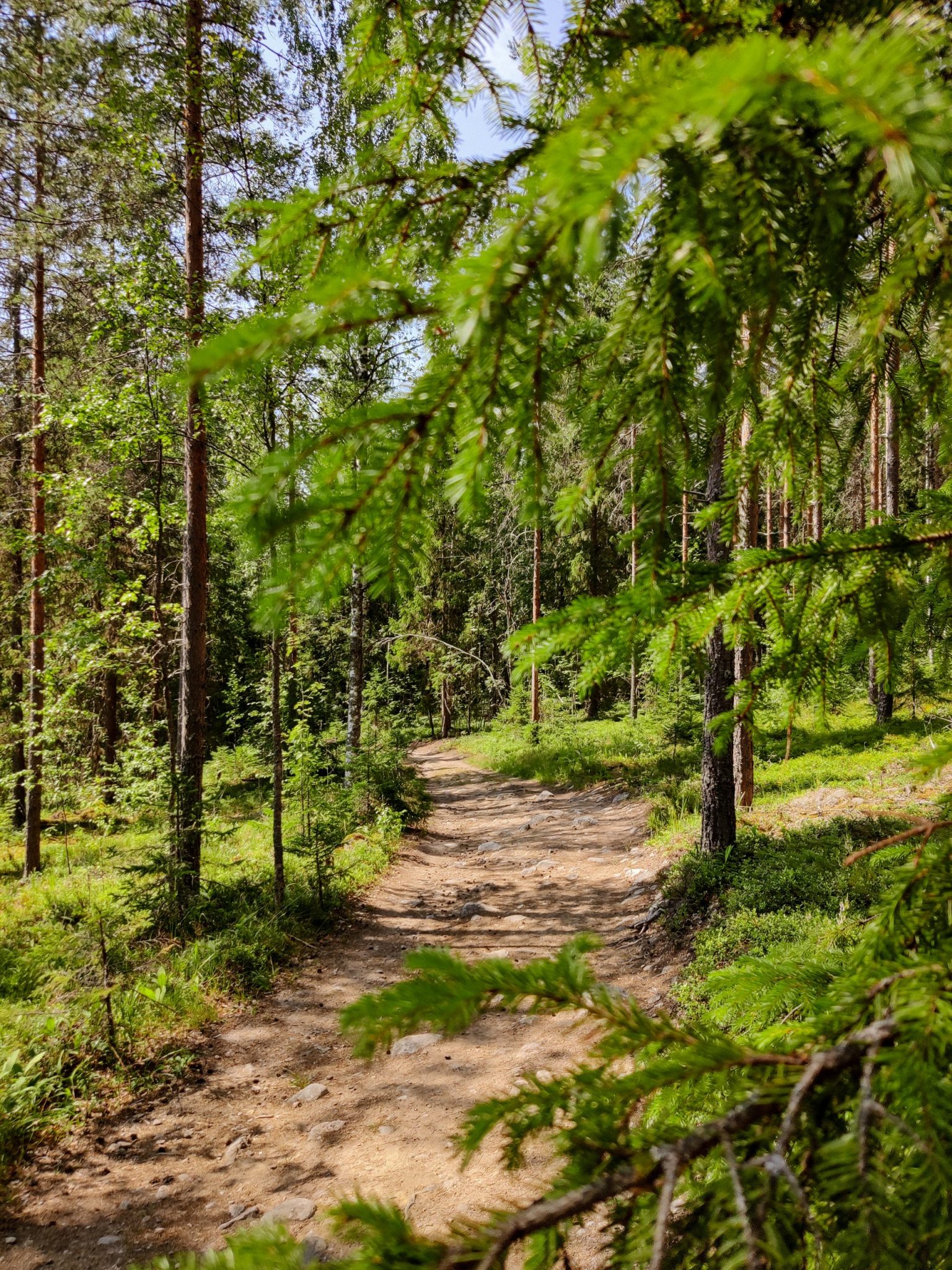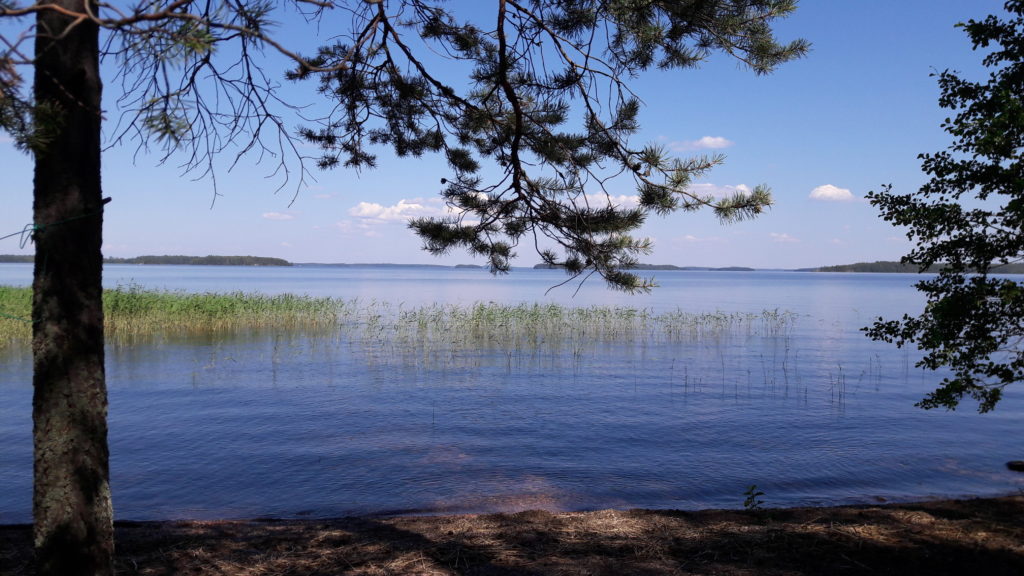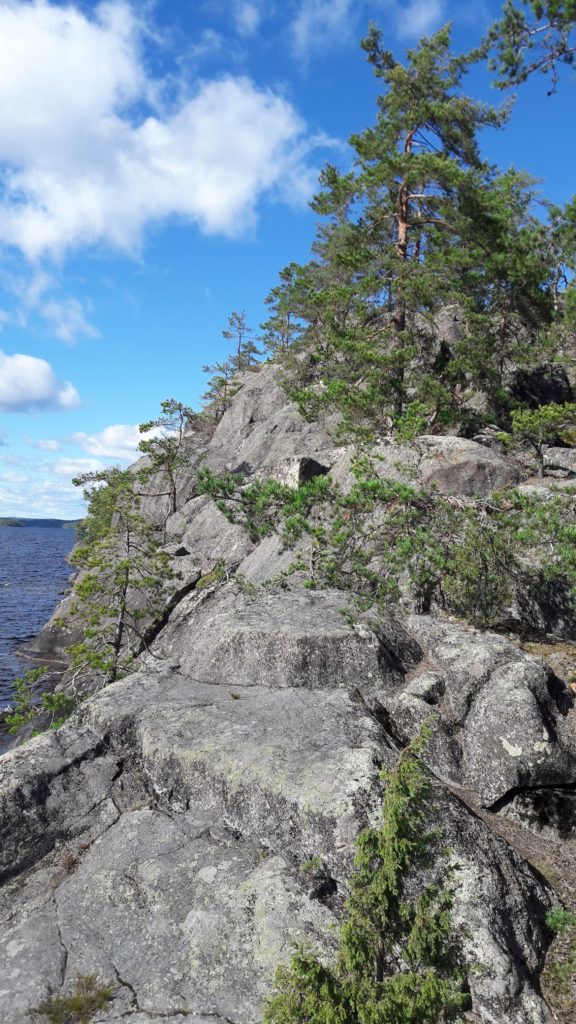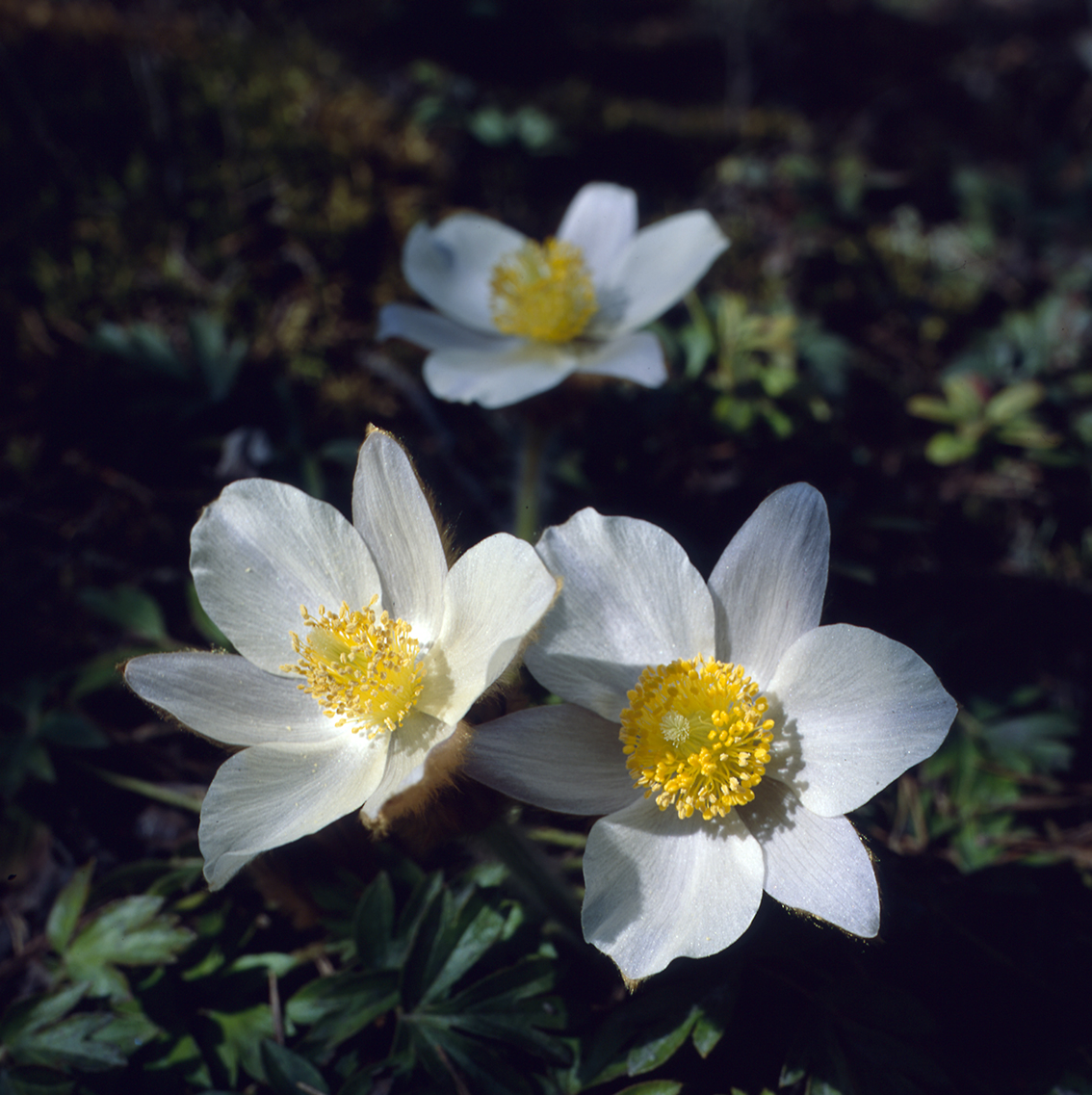The lush forests and clear waters of Lake Saimaa
Bodies of water
The largest lake basins in the Saimaa Geopark area are Luonteri, Lietvesi, Yövesi and Suur-Saimaa. The deepest point of Saimaa (82 km) is located in the southeastern corner of Yövesi. The water quality is predominantly excellent, and the waters are oligotrophic and have low humus concentration.
The scenery is filled with countless rocky islands and cliffs in the north, and arenaceous eskers and shores in the south. The landscape of the bedrock and soil is heavily streaked due to the shear zones of the bedrock and movements of the ice sheet. The shores are usually bare, and plenty of phragmites flourish in the sheltered bays. The existence of isoetids such as isoetaceae (Isoëtes), water lobelia (Lobelia dortmanna) and shoreweed (Littorella uniflora) is representative of the water clarity and its bareness.
Forest and flora
The scenery is overruled by forest. Nearly 90% of the land area is used for forestry. Of the forests, somewhat over 40% is pine, while a third consists of spruce. The rest fifth is dominated by deciduous trees. The forest growth is of the best in Finland. Some rare biotopes are found in the area as well, such as sunny and dry habitats on the eskers, transition mires and quaking bogs, springs and spring fens, boreal forests, hardwood forests, as well as forest swamps.
The Saimaa area is part of the southern taiga. The flora consists mainly of eastern and southern plant species, of which the eastern species favor continental climate. Slash-and-burn agriculture was still implemented in the area as late as the 1930s, and as a remnant, some typical species for the farming method are still found, such as the bristly bellflower (Campanula cervicaria), the clustered bellflower (Campanula glomerata), the field scabious (Knautia arvensis) and the burnet-saxifrage (Pimpinella saxifraga). In the archipelago, temperate broadleaf and mixed forests represent the remains of grazing and the slash-and-burn agriculture of the area. Also, a small-leaved mine (Tilia cordata) is found in the more flourishing locations.
The flora of the esker islands is bare and the forests mainly consist of pine. The plant species found in the eskers include both typical esker plants and rarer species such as the Diantus arenarius, the Breckland thyme (Thymus serpyllum) and the spring pasqueflower (Pulsatilla vernalis).
The forest of Finland after the ice age
After the Weichselian glaciation approximately 11,200 years ago, the climate started to rapidly warm up. The land areas that were released from under the ice were at first covered with thin grass, which was soon replaced by tundra and its flora. While the edge of the ice sheet continuously receded up north, heath vegetation started to take over. The first tree to spread to Finland was the dwarf birch, which was soon followed by juniper, mountain ash, aspen, willow and birch. Consequently, our first forests were deciduous forests dominated by birch, while pine spread here approximately 9,000 years ago from the southeast. During that time, also the straits of Denmark were formed, and due to the continuous post-glacial rebound, the Finnish shoreline also started to take its current form, although it was still situated inland of the Ostrobothnian area for no less than 100 kilometers. Only some remains of the continental ice were still found in the northern mountains of Sweden and Norway.
After the ice age, an exceptionally warm interglacial period known as the Atlantic period took place approximately 9,000 to 5,000 years ago. During that time the climate of southern Finland resembled that of the current climate of Central Europe. At the beginning of this era, the flora grew denser and the first mixed- and scots pine forests were formed. Alder in particular spread explosively. Gradually the amount of noble deciduous trees such as hazel, elm, linden and oak increased and spread all the way up to the Oulu region. Reaching its current occurrence at the beginning of the interglacial period, spruce is a relative newcomer in Finland.
At the end of the warm period, the climate started to gradually cool down and coniferous trees started to dominate the forests. Oak and hazel forests vanished and the deciduous tree zone receded to the south. The climate became more humid and peat bogs started to develop especially in Lapland at an accelerated rate. Not many changes to our flora have happened since. From the beginning of the Common Era, the climate started to once again become more temperate, reaching its peak in the 13th century. After two hundred years, however, this was followed by a rapid global cooling known as the Little Ice Age.



